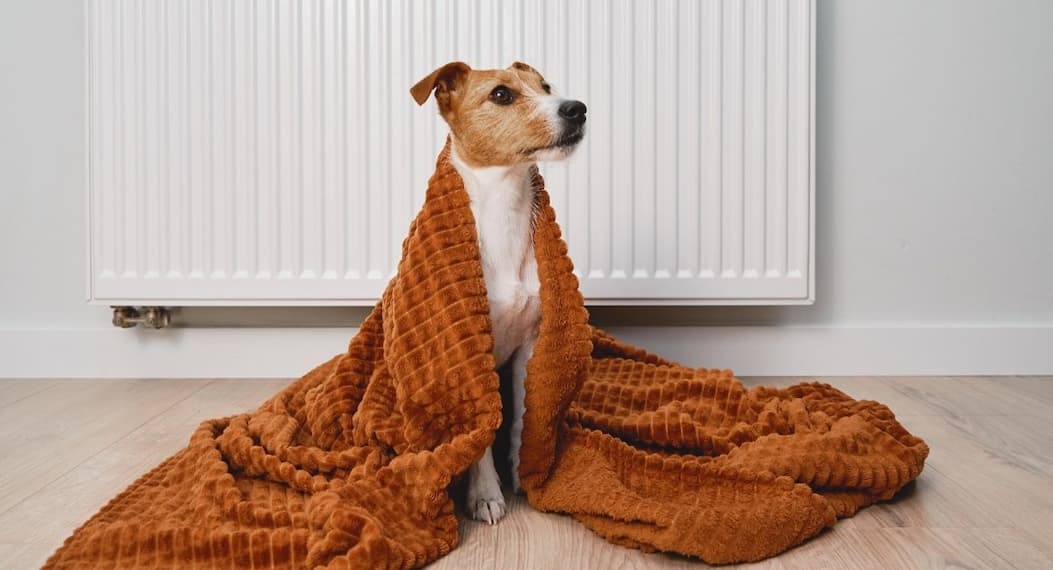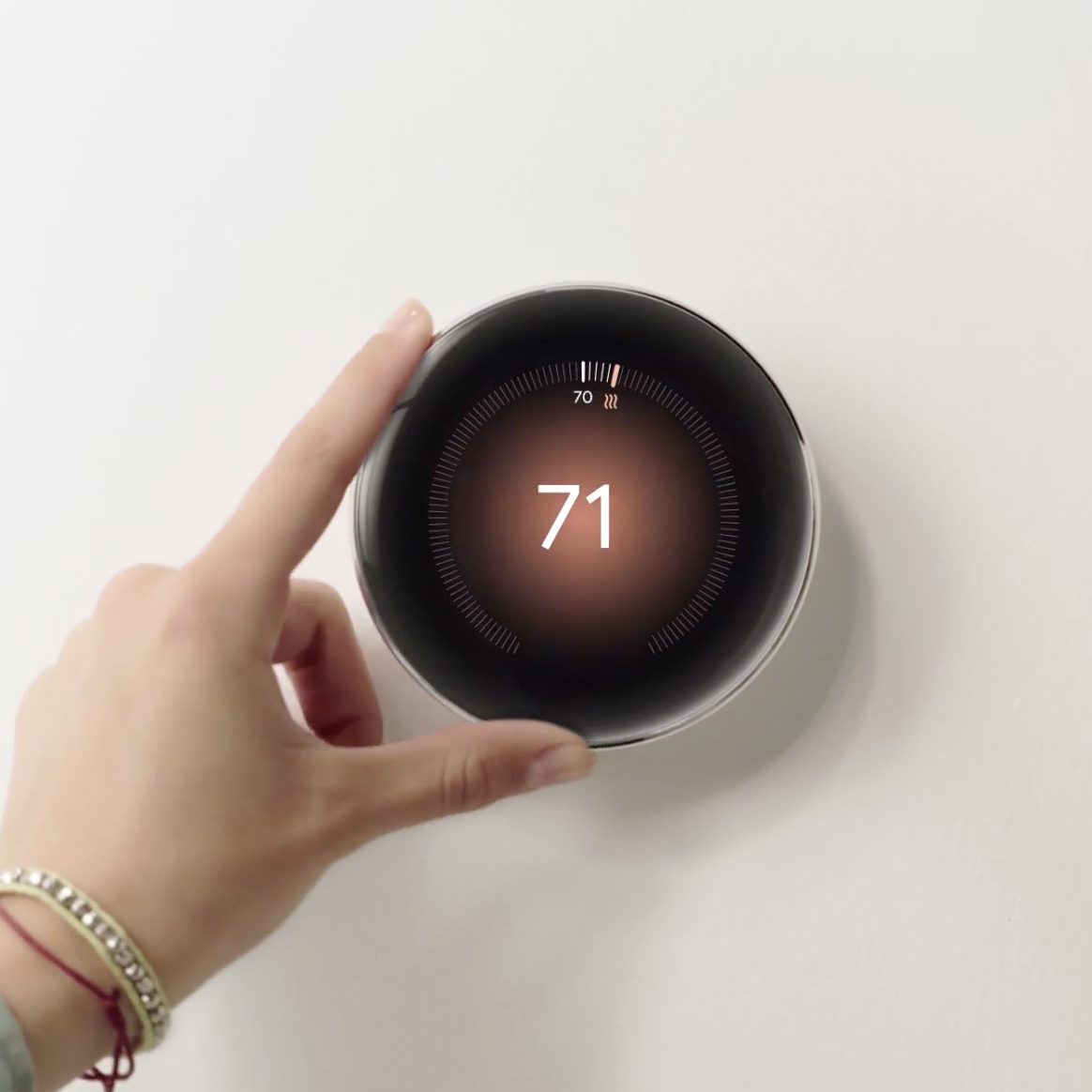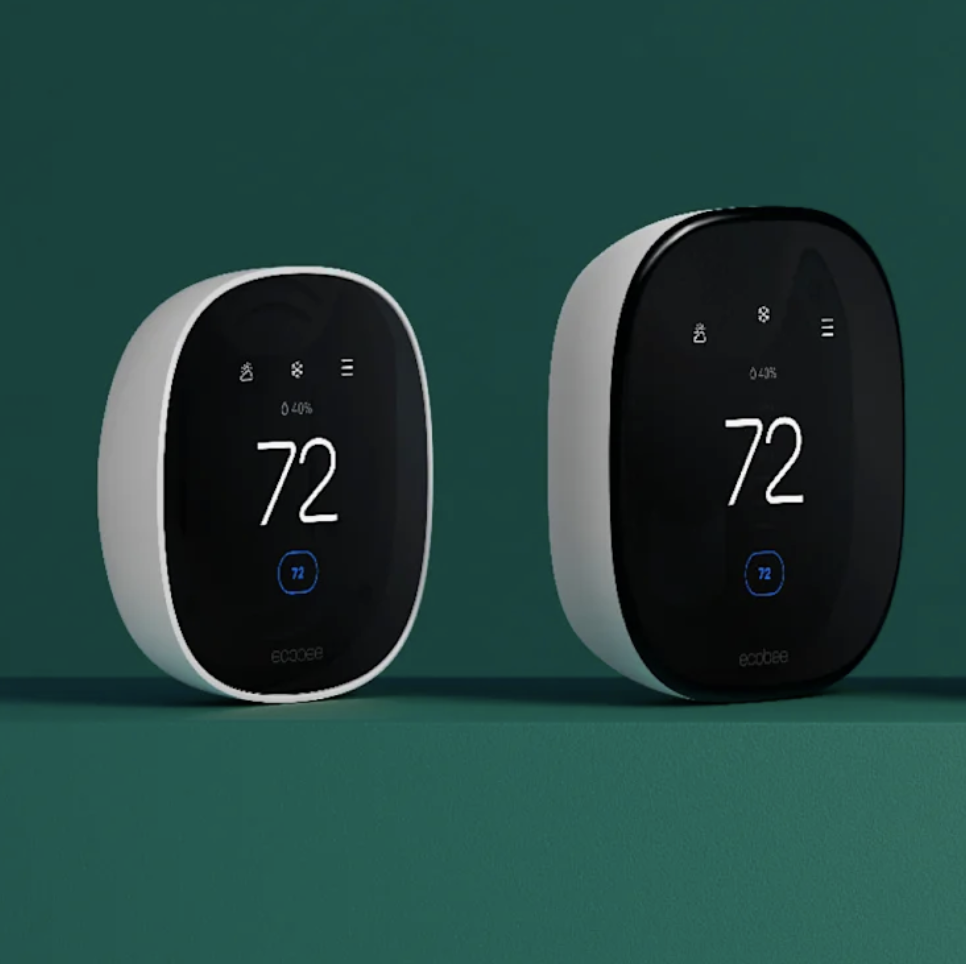Baby It's (Getting) Gold Outside: Your Guide to Smart Thermostats

The temperature regulation in this 1912 house was a complete disaster when we moved in. When Denver's dryness would meet below-freezing temps, I would find myself wrapped in three blankets contemplating my life choices. Painters painted shut our radiators and the air would come out of two tiny holes in our bedroom. It was…odd. In the height of the winter months, my friend Abby would come over for parties in her housecoat. Then, we discovered Mini-Splits and they're the second-best thing about our house, only behind our pebble ice maker which takes up 3/4 of our counter space.
Here's the thing: home heating accounts for roughly 29% of residential energy use in the US, making it the biggest energy hog for most households during winter. The average American household drops over $800 annually on heating - and that's just the financial cost, not the environmental one.
So how do we stay cozy without contributing to the climate crisis or requiring housecoats at Christmas parties? Let's dive in.
Smart Thermostats Are The One Thing In Your House That Actually Listen
Installing a smart thermostat* is genuinely one of the easiest ways to reduce your heating footprint without having to constantly think about it. These little devices learn your schedule, adjust temperatures automatically, and prevent you from heating an empty home while you're at work pretending to understand what everyone's talking about in that 3pm meeting.
Here are the heavy hitters:

Nest Learning Thermostat uses occupancy sensors and actually learns your routine over time (creepy? Maybe. Effective? Definitely). Studies show it can reduce home heating costs by 10-12% on average.

Ecobee Smart Thermostat features remote sensors so you're not overheating the living room while your bedroom feels like a meat locker. Perfect if you have multiple zones or a larger home.

Honeywell Home T9 offers room sensors and geofencing, which means it knows when you've left for your weekend at your friend's cabin and adjusts accordingly.
Heat Pumps: Not Just A Boring Name
If you're replacing an existing system or building new, listen up: heat pumps are kind of having a moment, and for good reason. Unlike furnaces that burn fuel to create heat (very 2010), heat pumps transfer heat from outside air - even in cold weather - into your home. Magic or science? Maybe both.
Why they're incredible:
- They're 2-4 times more efficient than traditional home heating systems
- They do both heating AND cooling (overachievers)
- They run on electricity, so you can power them with renewable energy
- No combustion = no carbon monoxide risk (always a plus)
Air-Source Heat Pumps work effectively in temperatures as low as -13°F with the newer cold-climate models. That means they're suitable for most of the continental US, including those of you dealing with actual winter in places like Minnesota and Maine.
Our Mini-Splits are a ductless air-source heat pump system with an outdoor compression unit. They're the opposite of chic but you can jazz them up even more if you have a husband like mine who put wallpaper on each one to blend in (overachiever? Yep).

Ground-Source (Geothermal) Heat Pumps are even more efficient because they use stable underground temperatures. Yes, installation costs are higher (and by higher, I mean significantly higher), but they can reduce heating and cooling costs by 30-60% compared to conventional systems. If you're planning to stay in your home long-term, the math works out.
Here's the good news: The Inflation Reduction Act provides tax credits of up to $2,000 for heat pump installations, so the government is literally paying you to make the switch.
When You Need A Backup Plan
For regions where heat pumps aren't practical or during those polar vortex situations, high-efficiency gas furnaces are still an option. Look for models with an Annual Fuel Utilization Efficiency (AFUE) rating of 95% or higher. These condensing furnaces extract more heat from fuel and release fewer emissions, which is about as good as it gets in the gas furnace world.
The Unglamorous Stuff That Actually Makes A Difference
Look, I know sealing air leaks isn't sexy. But air leaks account for 25-40% of heating energy waste in typical homes, which means you're essentially heating the outdoors.
Here's where to focus:
- Weatherstripping around doors and windows (the foam kind works great and costs like $5)
- Sealing gaps around pipes, vents, and electrical outlets
- Adding door sweeps to exterior doors (life-changing for that gap at the bottom)
- Caulking cracks in walls and foundations
Pro tip: Many utility companies offer free or subsidized energy audits where someone comes with a thermal camera and shows you exactly where your home is bleeding heat. It's honestly pretty fascinating in a nerdy way.
Insulation: The Gift That Keeps On Giving
Proper insulation is fundamental. Priority areas:
Attic: Should have R-38 to R-60 insulation depending on your climate zone. If you can see your floor joists, you need more insulation.
Walls: R-13 to R-21 is the goal.
Basement/Crawl Space: R-25 to R-30 for walls.
If you're adding insulation, consider sustainable materials like cellulose (made from recycled paper), sheep's wool, or cotton (often made from recycled denim). They perform just as well as fiberglass but have lower embodied carbon, and honestly, the idea of insulating your house with your old skinny jeans is pretty cool.
Windows: The Weak Link
Windows are major sources of heat loss, but full replacement is expensive and not always necessary. Cellular shades or thermal curtains can reduce heat loss by 25-50% when closed at night. For single-pane windows, interior storm windows or window film can improve insulation significantly without the cost of new windows.
The Boring But Important Maintenance Stuff
Regular maintenance = better efficiency = longer system life = less waste:
- Change HVAC filters monthly during heavy use (set a phone reminder, you'll forget otherwise)
- Schedule annual professional maintenance
- Clear vents and registers of furniture and debris
- Clean or replace humidifier filters if you use one
TRENDING QUESTIONS
Ask Atticus
What temperature should I actually set my thermostat to?
The Department of Energy recommends 68°F when you're home and awake, and lower when you're asleep or away. I know, I know - that feels cold if you grew up in a house kept at 72°F like I did. But here's the thing: every degree you lower your thermostat saves about 3% on home heating costs.
The trick is layering. Cozy socks, a good sweater, throw blankets on the couch - think of it as the indoor equivalent of dressing for the weather. Revolutionary concept, I know.
When should I get a professional energy audit?
If you're noticing high heating bills, drafty rooms, or you just moved into an older home, it's worth it. Energy audits typically cost $200-600 but can identify improvements that pay for themselves within a year or two. Many utility companies offer free or subsidized audits - check with yours first. The auditor will use tools like blower doors and thermal cameras to show you exactly where your home is losing energy, which is honestly pretty eye-opening. Bottom line: Winterizing sustainably isn't about suffering through a cold house in the name of the environment. It's about efficiency. Smart technology, proper insulation, and efficient heating systems mean you can stay comfortable all winter while reducing both your carbon footprint and your utility bills.
The initial investment in upgrades pays dividends through lower ongoing costs and increased home value, making this one of the most practical sustainability improvements you can make. Plus, there's something deeply satisfying about knowing you're not literally heating the neighborhood through gaps in your door frame.
Stay warm out there, and let me know if you have questions! *My friend Mia and I think we invented the Google Nest thermostat in the back of a NYC Taxi in Summer 2009 but that's a story for another week.
Subscribe now to continue reading.
(16% discount)
• Access to unlimited articles
• Sustainable product guides & recommendations
• Weekly newsletters
Already a member? Log in.













